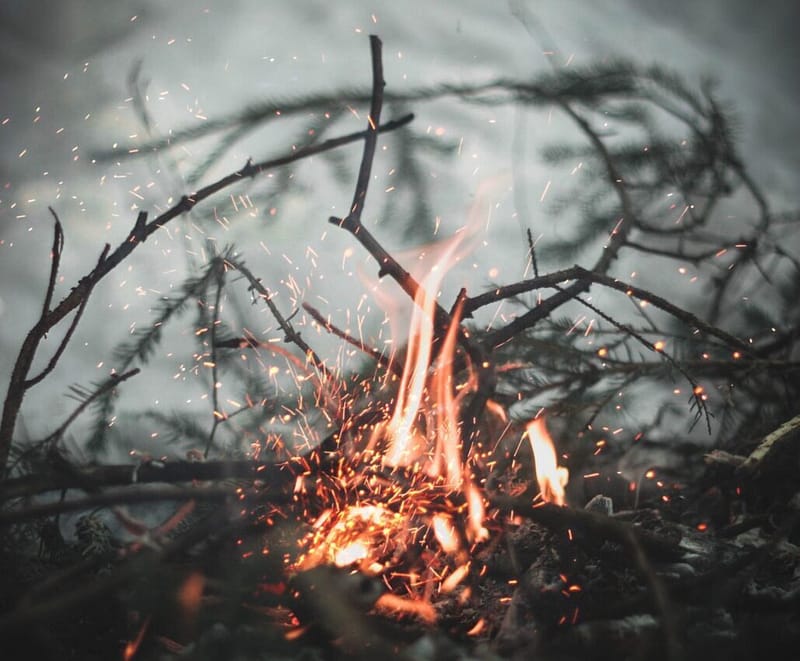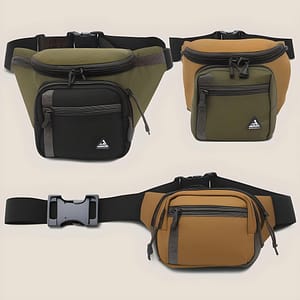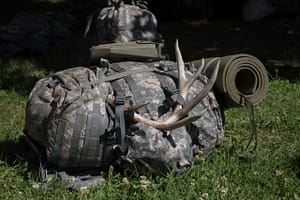Fire kindling, is one of the things I personally like most about camping. It embodies an ancient skill, a kind of return to our origins. Every time I kindle the fire I am filled with a sense of satisfaction, a kind of small creation. Apart from that, lighting a fire embodies many advantages, from heating the campsite, using the fire for a natural light and of course allows you to prepare delicious camping meals. In this essential guide, we’re going to dive headfirst into the wonderful world of lighting a fire in nature like a pro. AIt’s worth noting that finding a good camping site can also help with easier fire kindling, and we got some good tips on that too.
So, grab your marshmallows and let’s get this fiery party started!
Safety first
Now, before we jump into the juicy details, let’s talk about safety. It’s important to remember that fire can be a friend or a foe, depending on how you handle it. So, always prioritize safety when starting a fire in nature.
1. To start of, choose the right location.
Make sure you’re in an area where fires are allowed and won’t pose a risk to the surrounding environment. Look for a designated fire pit or ring, or if one isn’t available, take the time to clear a small area of any debris and make sure there are no overhanging branches or flammable materials nearby.
2. It’s important to prioritize safety when lighting a fire.
Keep a bucket of water, sand, or a fire extinguisher nearby in case of emergencies. Never leave the fire unattended and always fully extinguish it before leaving the area or going to bed. Remember, a fire can quickly get out of control, so it’s better to be safe than sorry.
3. Enjoy the fire responsibly.
Once your fire is burning safely, it’s time to sit back, relax, and enjoy the warmth and ambiance. Share stories, roast marshmallows, and have a good time. But remember to be respectful of the environment and the wildlife around you. Don’t burn anything that shouldn’t be in the fire, and make sure to properly dispose of any ashes or debris once the fire has completely burned out.
4. Leave no trace.
When you’re done enjoying your fire, it’s important to leave no trace behind. Make sure to fully extinguish the fire by pouring water over the embers and stirring them until they’re cold to the touch. Then, scatter the ashes and debris in the surrounding area. Pack out any remaining trash or debris and leave thearea as you found it. By practicing Leave No Trace principles, you can ensure that future campers and nature enthusiasts can enjoy the same beautiful surroundings.
What is fire kindling?
There is one crucial element in starting a fire: kindling. Kindling refers to the smaller materials like twigs, leaves, and small branches that you need to ignite the fire. It’s like the foundation of your fire-building masterpiece! Of course, it is important to mention that fire kindling is also one of the main steps to prepare the best camping meals.
How should fire kindling be arranged?
Ah, the fine art of fire kindling. It’s like arranging a symphony of wood and flames, with a touch of rustic charm. When it comes to arranging your fire kindling, think of it as building a mini log tower of epic proportions. Start with a solid base of larger logs, the wise elders of the fire world. Then, layer on the tinder like a cozy blanket of dry leaves and pine needles, the soft and delicate babies of the fire family. Finally, carefully place the sticks and twigs, the rowdy youngsters who bring the crackling and popping soundtrack to our fire soirée. And voila! Your fire kindling masterpiece is complete. Now, let’s light this baby up and watch the flames dance with delight!
It’s important to remember these two main rules:
1. Start Small: Remember the saying, “from small beginnings come great things”? Well, the same holds true for fires! Firstly, Begin by gathering a small pile of dry twigs, straw, or newspaper. These little guys will act as the foundation of your fire and help ignite the bigger logs. Think of them as the spark that lights up the night!
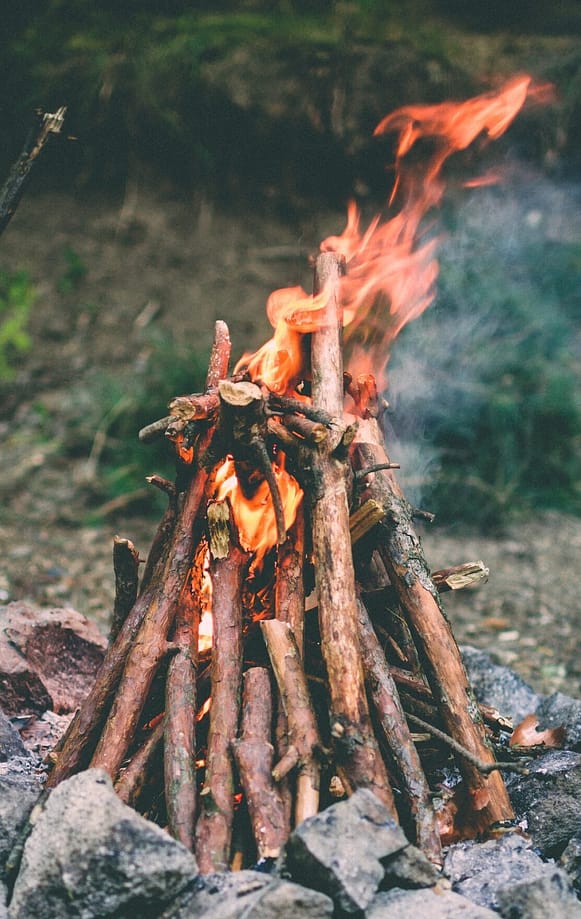
2. Teepee Technique: Secondly, it’s time to channel your inner architect. Take three or four sticks and arrange them in a teepee shape over your small kindling pile. This technique helps to create airflow, allowing oxygen to reach the flames and keep them burning strong.
What materials are best for fire kindling?
Clearly, the best materials for fire kindling are not those fancy, expensive fire starters you can find at the store. No, no, no! We’re talking about good ol’ natural materials that Mother Nature herself has provided.
1. Dry twigs and small branches

The unsung heroes of fire starting. They’re like the cheerleaders of the fire world, always ready to add a little spark to the party.
2. Pine needles

The divas of the fire family. They bring that extra oomph of fragrance and a hint of sass to the flames.
3. Dry Pinecones

The MVPs of fire kindling. They’re like little firebombs, packed with resin that ignites easily and burns with a steady flame. Just make sure they’re dry and not too large, or they might smother your fire.
4. Dry Birch Bark

The rugged and reliable option. Just like the tough exterior of a seasoned camper, dry bark provides the perfect fuel to get your fire roaring. Look for fallen tree bark or strips that easily peel off from dead branches.
5. Wood shavings

Wood shavings are also fantastic fire kindling. They’re like the fairy dust of the fire world, easily igniting and adding a magical touch to your campfire. Shavings from wood, especially hardwoods like oak, can be great kindling due to their small size and low moisture content.
6. Dry cattail fluff

While it may seem like an unlikely fire starter, cattail fluff is highly flammable and can easily catch fire with just a spark. Just be careful not toinhale it while blowing on the fire, unless you want a unique camping experience with a sneezing fit!
7. Dried grass and straw

Dried grass and straw are also excellent options for fire kindling. They’re like the wildflowers of the fire world, adding a touch of nature’s beauty to your flames. Can ignite easily and create a good base for building a larger fire.
8. Dry leaves

Dry leaves are like the confetti of the fire world, fluttering and twirling as they burn.
9. Dried Seaweed
The ocean’s contribution to fire kindling. If you’re lucky enough to be camping near the coast, dried seaweed can be a fantastic option for starting your fire. It lights easily and burns with a unique crackling sound, adding a coastal touch to your campfire experience.

By the way, for more about the necessary equipment for camping, please check camping gear.
Fire kindling that you can buy
If you think you won’t be able to find a natural fire starter at your campsite , there are several commercially available fire kindling products that you can purchase to help you start your fire more easily. These products are designed to ignite quickly and provide a reliable source of kindling. Here are some options:If you’re unable to find natural fire kindling at your campsite, there are several commercially available fire kindling products that you can purchase to help you start your fire more easily. These products are designed to ignite quickly and provide a reliable source of kindling. Here are some options:
1. Firestarter sticks or cubes: These are convenient and easy to use. Simply place them under your firewood and light them for a quick and reliable fire.
2. Fire starters made from compressed sawdust or wax: These compact blocks are designed to burn for a long time, providing a steady flame to ignite your firewood.
3. Fatwood: This is resin-rich pine wood that ignites easily and burns hot. It can be purchased in the form of sticks or shavings.
How long does fire kindling typically take to burn?
The burning time of kindling can vary depending on a few factors. The type of kindling you use, the size of the pieces, and the conditions in which you’re lighting the fire can all play a role in how long it takes for the kindling to burn.
If you’re using dry and lightweight materials like dried twigs or pine needles, they can burn relatively quickly. In ideal conditions, it might take anywhere from a few seconds to a couple of minutes for the kindling to burn completely. However, if the kindling is damp or wet, it will take longer to catch fire and burn.
How often should kindling be replaced for optimal fire performance?
Ah, the age-old question of kindling replacement! Well, the answer is not set in stone, or in this case, logs. It really depends on the quality of your kindling and the performance you’re looking for. If you want your fire to shine brighter than a disco ball, then it’s best to replace your kindling with fresh, dry materials every time you light a fire. However, if you’re okay with a fire that’s more like a cozy little candle, then you can probably get away with using the same kindling a few times before giving it the old heave-ho.
So, how often should kindling be replaced to ensure the best fire performance? The answer depends on various factors such as the type of kindling used, weather conditions, and the size of your fire. However, as a general rule of thumb, it’s recommended to replace kindling with fresh materials for each new fire you light.
Why should you replace kindling regularly? Well, kindling tends to burn quickly and gets consumed rapidly. As it burns, it turns into ash or coals, losing its ability to ignite larger logs effectively. By replacing kindling for each fire, you ensure that you have the best chance of starting a successful fire every time.
What alternatives exist to using fire kindling?
Sometimes you can find yourself without those precious twigs and pine needles. Fear not, for there are alternatives that can ignite your fire with a touch of creativity and in my opinion, are some of best kindling alternatives.
1. Cotton Balls and Petroleum Jelly as fire kindling

This quirky combination is a favorite among seasoned campers. Simply take a cotton ball and coat it with petroleum jelly. The jelly acts as a fantastic fire starter, giving your fire the kickstart it needs. Plus, who can resist the sight of flaming cotton balls? It’s like a mini bonfire party in your camping spot!
2. Doritos as fire kindling

Yes, you read that right! Those beloved cheesy chips can double up as fire starters too. Who would have thought that a bag of Doritos could save the day? The high fat content in these chips makes them incredibly flammable. Just place a few Doritos on top of your tinder and watch them ignite in a blaze of cheesy glory. Plus, you’ll have a tasty snack while you wait for your fire to roar.
3. Dryer Lint as fire kindling:
Before you toss that lint from your dryer, consider saving it for your next camping trip. They is highly flammable due to its fibrous composition and can be an excellent alternative to fire kindling. Dryer lint is highly flammable due to its fibrous composition, making it an ideal fire starter. It’s lightweight, easy to carry, and can be a lifesaver when you find yourself without the usual twigs and pine needles.
To use dryer lint as a fire starter, simply gather up a generous amount of lint from your dryer’s lint trap. Make sure it’s clean and free from any detergent or fabric softener residue. These chemicals can inhibit the lint’s ability to ignite, so it’s best to use lint that is pure and fluffy. Next, gather your tinder, whether it’s dried leaves, small sticks, or other easily combustible materials. Place the lint on top of your tinder, forming a small pile. The lint will act as a perfect igniter, quickly catching fire and transferring the flame to your tinder.
4. Paper Egg Cartons as fire kindling
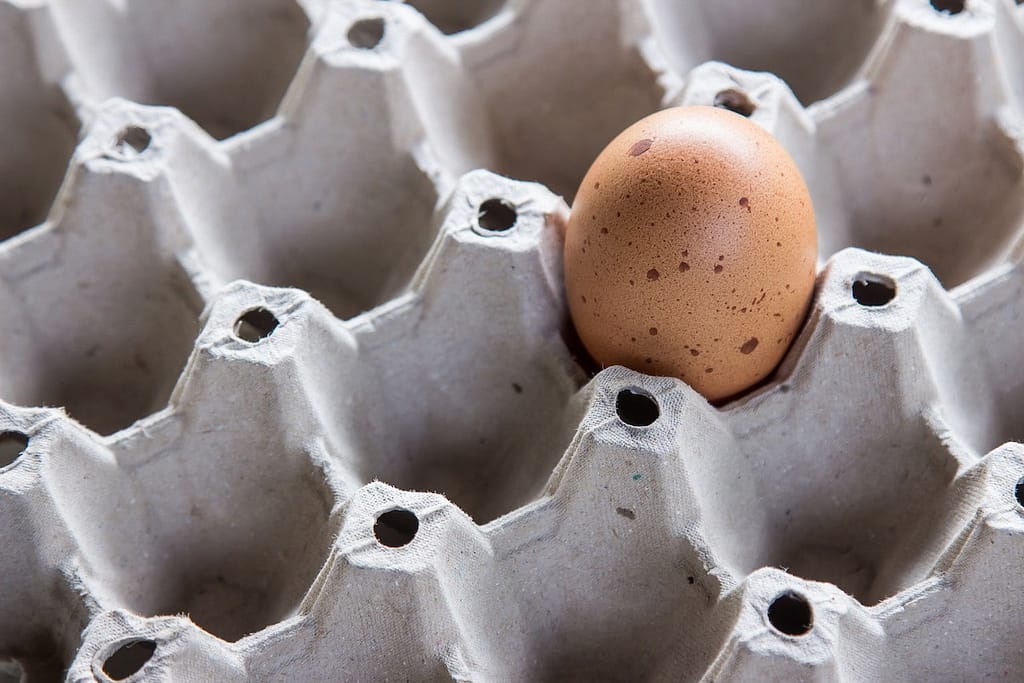
These cartons are made from cardboard that is highly flammable, making them perfect for kindling. To use a paper egg carton as a fire starter, simply fill each egg compartment with small pieces of paper or other flammable materials. You can even add a small amount of wax or petroleum jelly to each compartment to enhance the flammability. Once the carton is filled, close it up and light one of the compartments. The fire will quickly spread to the rest of the carton, providing you with a reliable and humorous fire starter.
5. Dried Fruit Peels as fire kindling
Who knew that your leftover fruit peels could be used to start a fire? Dried fruit peels, such as orange or banana peels, can be excellent fire starters due to their natural oils and flammable properties. To use dried fruit peels as a fire starter, simply collect a handful of peels and allow them to dry out completely. Once dried, place the peels in your fire pit or campfire area, along with your tinder and kindling. The natural oils in the peels will help ignite the fire and provide a pleasant aroma as well.
All of the above alternatives are great options for the best kindling, and everyone can choose what suits their knowledge and the means at their disposal.
6. Dried corn husks or cobs as fire kindling

They’re like the secret ingredient that adds a unique flavor to your campfire experience. These materials can be effective kindling due to their dry nature and ability to catch fire quickly.
7. Cardboard, or even old paper towels or napkins as fire kindling
These can also work as fire kindling. They’re like the recyclable superheroes of the fire world, giving new life to old materials while helping you start your fire.
However, make sure to use newspaper without colored ink or glossy coatings, as these can release harmful fumes when burned.
Which fire kindling materials affect the environment and may harm your health
1. Treated Wood or Pressure-Treated Wood

One material to avoid using as kindling for your fire is treated wood or pressure-treated wood. Treated wood is often used for outdoor projects such as decks, fences, and playground equipment because it has been treated with chemicals to resist rot and insect damage. While this makes it durable for those purposes, it also makes it dangerous to burn.
Burning treated wood releases toxic chemicals into the air, including arsenic and other harmful substances. Inhaling these fumes can have serious health effects, including respiratory issues, skin irritation, and even long-term health problems. Additionally, the chemicals in treated wood can soil and water when the ashes are disposed of.
2. Plastic

Another material to avoid using as kindling is plastic. Burning plastic releases toxic fumes that are not only harmful to your health but also detrimental to the environment. These fumes contain chemicals such as dioxins, furans, and volatile organic compounds (VOCs), which can cause respiratory problems, cancer, and other serious health issues. In addition, the burning of plastic contributes to air pollution and releases harmful pollutants into the atmosphere.
3. Synthetic Materials
Items like synthetic fabrics, foam, and rubber produce noxious fumes when burned. Avoid using these materials as kindling.
4. Colored or Glossy Paper
Paper with colored ink or glossy coatings can release harmful chemicals when burned. Stick to plain, uncoated paper for fire starting.
5. Trash and Non-Biodegradable Materials

Burning non-biodegradable materials like aluminum cans, glass, and other trash can harm the environment and create pollutants.
6. Wet or Damp Materials

Burning wet or damp materials produces more smoke and less heat, contributing to air pollution and causing discomfort for those nearby.
7. Accelerants:
Using accelerants like gasoline, kerosene, or lighter fluid to start a fire is dangerous and can lead to uncontrolled and potentially explosive flames.
In conclusion, lighting a fire in nature can beIn conclusion a fun, and lighting enjoyable a experience fire, in but nature can it’s important be to do a fun and so enjoyable experience safely and, but responsibly. it’s By following important these to tips prioritize safety and and avoiding hazardous be materials mindful of, you the environment can ensure. By that your following these campfire tips is, both enjoyable and environmentally friendly.
Remember, always you can ensure that you have a successful and check safe the fire-light regulations anding adventure guidelinesin the area where you plan to light a fire. These regulations and guidelines are put in place to protect the environment and prevent wildfires. It’s important to familiarize yourself with them and follow them accordingly.

